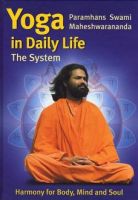The Guru principle is the eternally valid principle for the development of consciousness that leads the creation from unreality to reality, from the darkness of ignorance to the light of knowledge. In its purest form this cosmic principle manifests and reveals itself on earth as a divine incarnation or a spiritual Master.
Just as a residential building receives its supply of electricity directly from the power station, a direct and conscious connection also exists between the realised Master and God. Through spiritual and mental work, meditation and practice the Realised Masters have attained enlightenment and become one with the Divine Will. They are the wise ones who guide all those who are still living in ignorance towards the truth, instructing them and cautioning them.
At whatever level each process of development occurs, it also involves a growth in knowledge. The process of transmitting knowledge is often illustrated with the lighting of a candle. The Master ignites the light of knowledge within the disciple, who – when he has assimilated the teachings of the Master and internalised the Guru principle represented by the Master – finally becomes the Master himself.
The essence of the Guru principle is described in the following Mantras from the ancient traditions of India:
DHYĀNA MŪLAM GURU MŪRTI
The root of meditation is in the form of the Guru
What is the “form” of the Guru? The true form of the Guru is bliss, wisdom, unity, truth, purity, and light. The Guru is eternal, unchanging, omnipresent and omniscient. The essence of the Guru is a vibration of perfect, radiant, pure light.
PŪJĀ MŪLAM GURU PADAM
The roots of worship are the Lotus Feet of the Guru.
The “Lotus Feet of the Guru” are an ancient and holy symbol. They represent the divine presence on earth. When we lay our prayers, ceremonies and offerings at the feet of God we rid ourselves of our ego and show humility and devotion to the Divine Will.
MANTRA MŪLAM GURU VĀKYAM
The roots of the Mantra are the words of the Guru.
All Holy Scriptures (to name just a few: The Vedas, Upanishads, Bhagavad Gītā, Rāmāyana, the Bible and the Koran) are “Guru Vākya”, the words of divine Masters. Only when we understand and follow their message and their meaning can we be successful on the spiritual path.
MOKSHA MŪLAM GURU KRIPĀ
The root of liberation is the grace of the Guru.
Yoga is a path that we are able to travel along independently up to a certain point. We are able to achieve almost everything through the practice of Yoga; we are capable of expanding our consciousness throughout the entire Cosmos (Brahmānda) and can experience absolute emptiness (Shūnyākāsha), but we are unable to attain liberation (Moksha) in this way. To free ourselves from the fetters of Karma and the cycle of rebirth and death we need the help of the spiritual Master as the transmitter of Divine Grace.
Our “little” person is incapable of clearing away the enormous mountain of Karma alone. This can only be brought about by Gurukripā, Divine Grace, which makes the impossible possible. Only with the help of God and the Master are we able to complete our journey. Divine Grace is not limited to one religion or to one country; divine Saints and Masters are born in every age. A true Master is one who has attained unity with God and is therefore beyond all duality.
GURUR BRAHMĀ, GURUR VISHNU, GURUR DEVO MAHESHWARA
GURUR SĀKSHĀT PARABRAHMA, TASMAI SRI GURUVE NAMAH
The Guru is Brahmā, Vishnu and Shiva (= Maheshwara)
He is also Parabrahman, the Supreme Self
I bow before the Guru with the greatest adoration.
The three original powers within the Universe are represented in the three main deities, Brahmā, Vishnu and Shiva: Brahmā = the creator; Vishnu = the preserver and protector; and Shiva = the destroyer (of the negative tendencies within us) and the liberator (from the cycle of rebirth and death).
Parabrahman represents God as the aspect of undivided Unity. The Guru Principle, as the highest cosmic principle, therefore stands above these manifestations of the divine; it is God Himself.
Just as these powers work within the entire creation they also work within us.
Creative actions and productive thinking represent the Brahmā principle; the Vishnu principle is the careful protection of and care for the preservation of life and the natural environment; and the Shiva principle expresses itself in our drive to purify ourselves of negative characteristics, to free ourselves of problems, and to create a happy and agreeable life for ourselves. Willpower is also an aspect of the Shiva principle within us.
The essence of Parabrahman exists within each of us. This spark of the Divine Light is the “motor” of our spiritual drive and our mental development. The “Guru principle” also works within us guiding our soul towards the light of knowledge and truth.
The development towards our spiritual goal can be supported by external and internal influences, but can also be hindered by them. From amongst the favourable influences there are four specific occurrences that are a great blessing:
- To be born as a human.
- To be raised by loving and spiritual parents.
- To have a yearning for knowledge and truth.
- To meet a Realised Master.
If these four beneficial influences come together in one lifetime there is a great chance of reaching the spiritual goal. But if this golden opportunity is allowed to slip by unused, there may not be another opportunity for a very long time.
In his Bhajan, BHAI TUMA JAGO RE, my Master, Paramhans Swāmī Mādhavānanda, wrote:
“The precious diamond of a human life is not so easily bestowed. Again and again you must wander through the 8.4 million forms of existence ……”
And Srī Mahāprabhujī said in one Bhajan:
“A little ant can one day become Indra (the king of heaven): But that same Indra can be reborn on earth as an ant once the fruit of his good deeds has been used up.”
Everyone, even the gods in the celestial spheres, is bound by time and subject to rebirth. Even though they may remain in heaven for millions of years as a result of their good Karmas, this time will one day come to an end. But those whose liberated consciousness enters into the Cosmos are infinite and timeless. They do not die and are never again reborn.
In life we encounter six types of Gurus:
- Parents are the first Gurus. The influence and example of the parents, especially the mother, are of great importance in the continuing development of the child. Even during the growth of the baby in the womb the thoughts and feelings of the mother exert a strong influence on the child. It is important for the beneficial development of the child that it is conceived and raised by its parents in an environment full of love and harmony.
- Playmates and school friends are the second Guru. Character and habits are formed by the society that we predominantly keep. Because of its lack of moral values, bad company (Kusang) should be ignored as being a senseless and pernicious pastime that drags our consciousness down. But in good company (Satsang), with friends who are loving, wise and spiritual, our progress is supported. Remember that children are very easily influenced and imitate bad as well as good role models. Therefore we should be a good example for our children and, rather than just giving them lots of toys to play with, give them loving understanding, inspiration, love and wisdom.
- Third are our schoolteachers and Professors. They instruct us in Aparavidyā and help us acquire the knowledge and skills required for our profession and within society. If we utilise this knowledge correctly and pass it on to the next generation we have settled the “debt” that we as schoolchildren and students have towards our teachers.
- The fourth Guru is the religious teacher or priest who introduces us to the religious teachings and ceremonies of our culture. He instructs us in human Dharma, our duty towards family, community, our fellow humans, animals and nature. It is the Dharma of humans to be protectors and helpers, as well as to strive for knowledge and God-Realisation. Unfortunately nowadays only a few people fulfil this most important duty.
- The fifth Guru is the Satguru, the spiritual Master, who shows us our spiritual Dharma and transmits to us Paravidyā, spiritual knowledge. He teaches us the true religion and our connection to God (Sat Sanātan Dharma), which stands above all denominational differences. The spiritual teacher shows us the way to our real Self (Ātmā). He opens the door to liberation and God-Realisation for the disciple. In every religion and within all nations and cultures around the world we encounter the Master-Disciple principle. All the great teachers of humankind that we revere as divine incarnations also had a Guru, a Master. Rishi Sandīpa was the Master of Lord Krishna, Rishi Vasishtha was the Master of Lord Rāma, and Rāma was the Master of Hanuman. John the Baptist baptised Jesus Christ, and Jesus was called “Master” by his apostles.
- Ultimately, the sixth and final Guru is the inner Master that exists within each and every one of us. As the disciple attains mastery he becomes his own “Guru”, and also becomes capable of passing on the light of knowledge and wisdom to others.
Intellectual knowledge is of no help on the spiritual path. Words and books can inspire us, but give us no real spiritual guidance. Only one who has gone before us and knows the way can guide us. If we wish to climb a mountain peak we choose a guide who knows the mountain from his own experience, not just from a map. How can a person whose only knowledge is from a map tell us what the ascent is like, what difficulties there are to overcome and which is the best way for us to reach our goal?
The only one worthy of our complete trust is the BRAHMANISHTHA SHROTRIYA SATGURU who has already trodden the path and reached the goal. Only the Sataguru knows the direction and how he is able to help us in every situation. God is everywhere; nevertheless we must seek our path to God in our consciousness, whilst simultaneously holding tightly onto a piece of string that is guiding us. In Sanskrit this “guiding string” is called Guru. With the Sataguru’s help the disciple will eventually reach the goal.


